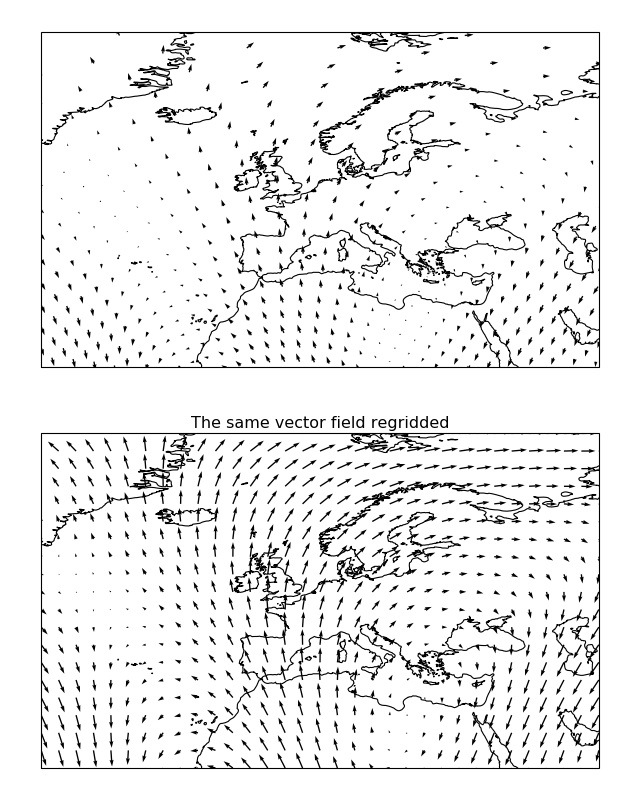Regridding vectors with quiver¶
This example demonstrates the regridding functionality in quiver (there exists
equivalent functionality in cartopy.mpl.geoaxes.GeoAxes.barbs()).
Regridding can be an effective way of visualising a vector field, particularly if the data is dense or warped.

"""
Regridding vectors with quiver
------------------------------
This example demonstrates the regridding functionality in quiver (there exists
equivalent functionality in :meth:`cartopy.mpl.geoaxes.GeoAxes.barbs`).
Regridding can be an effective way of visualising a vector field, particularly
if the data is dense or warped.
"""
import matplotlib.pyplot as plt
import numpy as np
import cartopy.crs as ccrs
def sample_data(shape=(20, 30)):
"""
Returns ``(x, y, u, v, crs)`` of some vector data
computed mathematically. The returned CRS will be a North Polar
Stereographic projection, meaning that the vectors will be unevenly
spaced in a PlateCarree projection.
"""
crs = ccrs.NorthPolarStereo()
scale = 1e7
x = np.linspace(-scale, scale, shape[1])
y = np.linspace(-scale, scale, shape[0])
x2d, y2d = np.meshgrid(x, y)
u = 10 * np.cos(2 * x2d / scale + 3 * y2d / scale)
v = 20 * np.cos(6 * x2d / scale)
return x, y, u, v, crs
def main():
plt.figure(figsize=(8, 10))
x, y, u, v, vector_crs = sample_data(shape=(50, 50))
ax1 = plt.subplot(2, 1, 1, projection=ccrs.PlateCarree())
ax1.coastlines('50m')
ax1.set_extent([-45, 55, 20, 80], ccrs.PlateCarree())
ax1.quiver(x, y, u, v, transform=vector_crs)
ax2 = plt.subplot(2, 1, 2, projection=ccrs.PlateCarree())
plt.title('The same vector field regridded')
ax2.coastlines('50m')
ax2.set_extent([-45, 55, 20, 80], ccrs.PlateCarree())
ax2.quiver(x, y, u, v, transform=vector_crs, regrid_shape=20)
plt.show()
if __name__ == '__main__':
main()
